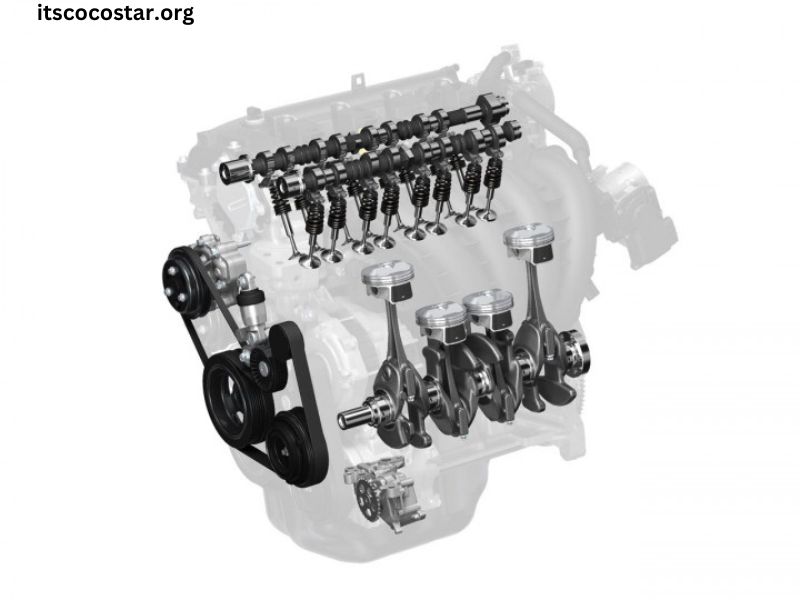In the ever-evolving automotive landscape, manufacturers are continuously seeking innovative ways to enhance vehicle performance, fuel efficiency, and environmental sustainability. Among these advancements, Mazda’s Skyactiv Technology stands out as a comprehensive approach that aims to redefine how cars operate and interact with their drivers and the environment. This article delves into what Skyactiv Technology is, its core components, benefits, and the implications for the future of automotive engineering.
Understanding Skyactiv Technology
Skyactiv Technology is Mazda’s umbrella term for a suite of engineering solutions designed to improve the overall driving experience. Introduced in 2011, it encapsulates advancements in engine design, vehicle architecture, transmission systems, and even body construction. The philosophy behind Skyactiv is rooted in a commitment to enhancing performance while reducing fuel consumption and emissions. By focusing on the synergy between different components, Mazda aims to create vehicles that deliver not only power and efficiency but also an engaging driving experience.
Key Components of Skyactiv Technology
Skyactiv Technology is multifaceted, comprising several interrelated components that work together harmoniously. Below are the main elements:
1. Skyactiv-G Engines
Skyactiv-G represents Mazda’s innovative gasoline engine technology. These engines are designed with a high compression ratio, which significantly improves thermal efficiency. Traditional gasoline engines operate around a compression ratio of 10:1, whereas Skyactiv-G engines can achieve ratios of up to 14:1. This higher ratio allows for more complete combustion of fuel, leading to increased power output and reduced fuel consumption.
Skyactiv-G engines also utilize a range of technologies such as:
- Direct Injection: Fuel is injected directly into the combustion chamber, allowing for precise control over the fuel-air mixture and enhancing combustion efficiency.
- Variable Valve Timing: This technology adjusts the timing of the engine’s intake and exhaust valves for optimal performance across different RPM ranges.
2. Skyactiv-D Engines
In addition to gasoline engines, Mazda also developed Skyactiv-D, a clean diesel technology that emphasizes low emissions and high torque. Skyactiv-D engines feature a unique design that allows for a lower compression ratio (around 14:1), which helps reduce the risk of diesel knock and improves cold-start performance.
The benefits of Skyactiv-D include:
- Reduced NOx Emissions: The engine’s design minimizes nitrogen oxides, a common pollutant associated with diesel engines.
- Enhanced Fuel Efficiency: The efficient combustion process translates to lower fuel consumption compared to traditional diesel engines.
3. Skyactiv-Drive Transmissions
Skyactiv-Drive is Mazda’s innovative automatic transmission system. It combines the best attributes of conventional automatic transmissions, continuously variable transmissions (CVTs), and dual-clutch transmissions (DCTs) to provide a smooth and responsive driving experience.
Key features of Skyactiv-Drive include:
- Quick Response: The transmission is designed to shift gears seamlessly, providing a direct connection between the engine and wheels for enhanced acceleration.
- Improved Fuel Efficiency: By optimizing gear ratios and minimizing energy loss during shifting, Skyactiv-Drive contributes to overall fuel savings.
4. Skyactiv-Body and Skyactiv-Chassis
Mazda’s commitment to weight reduction and structural integrity is evident in its Skyactiv-Body and Skyactiv-Chassis technologies. These components are designed to enhance safety while minimizing weight.
- Skyactiv-Body: This construction method uses high-strength steel to create a lightweight and rigid structure, improving safety ratings and handling dynamics.
- Skyactiv-Chassis: The chassis is engineered for improved stability and responsiveness, ensuring that the vehicle handles well in a variety of driving conditions.
Benefits of Skyactiv Technology
The integration of Skyactiv Technology offers numerous benefits for both consumers and the environment:
1. Improved Fuel Efficiency
One of the primary goals of Skyactiv Technology is to enhance fuel efficiency. By maximizing combustion efficiency in both gasoline and diesel engines, Mazda vehicles equipped with Skyactiv Technology can achieve impressive miles per gallon (MPG) ratings, reducing the frequency and cost of refueling.
2. Reduced Emissions
Skyactiv engines are designed to meet stringent emission regulations, making them environmentally friendly options in their respective categories. The reduction of pollutants such as NOx and particulate matter contributes to cleaner air and a lower environmental impact.
3. Enhanced Driving Experience
Mazda is known for its “Zoom-Zoom” philosophy, which emphasizes the joy of driving. Skyactiv Technology enhances this experience by delivering responsive acceleration, precise handling, and a connected feeling between the driver and the road. This focus on driving dynamics sets Mazda apart in a competitive market.
4. Lightweight Construction
The use of high-strength materials in the Skyactiv-Body and Skyactiv-Chassis reduces the overall weight of the vehicle. This not only contributes to better fuel efficiency but also improves handling and agility, allowing for a more engaging driving experience.
Future Implications of Skyactiv Technology
As the automotive industry shifts towards electrification and sustainable mobility, Skyactiv Technology will play a pivotal role in Mazda’s future. The company has already begun to explore hybrid and electric vehicle technologies, integrating Skyactiv principles to maximize efficiency and performance in these new platforms.
1. Hybrid and Electric Vehicles
Mazda’s approach to hybrid and electric vehicles leverages the expertise gained from Skyactiv Technology. The company aims to create a seamless transition between traditional internal combustion engines and electric drivetrains, ensuring that drivers experience the same level of engagement and efficiency.
2. Sustainability Goals
As automakers face increasing pressure to reduce their carbon footprint, Skyactiv Technology aligns with Mazda’s commitment to sustainability. The advancements in fuel efficiency and emissions reduction contribute to the company’s long-term goals of environmental stewardship and social responsibility.
3. Continued Innovation
Mazda’s dedication to research and development means that Skyactiv Technology will continue to evolve. Future iterations may incorporate advanced materials, enhanced electrification, and even more efficient combustion technologies, ensuring that Mazda remains at the forefront of automotive engineering.
Conclusion
Skyactiv Technology represents Mazda’s innovative response to the challenges faced by the automotive industry today. By combining efficiency, performance, and a focus on the driving experience, Mazda has created a platform that not only meets the demands of consumers but also addresses environmental concerns. As the automotive landscape continues to change, Skyactiv Technology is poised to play a crucial role in shaping the future of driving, blending tradition with innovation and sustainability. Whether you are a car enthusiast or an environmentally-conscious consumer, understanding Skyactiv Technology offers insight into how modern vehicles are designed to perform better while being kinder to our planet.






